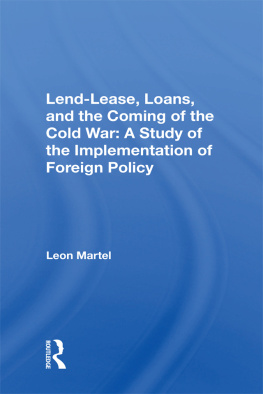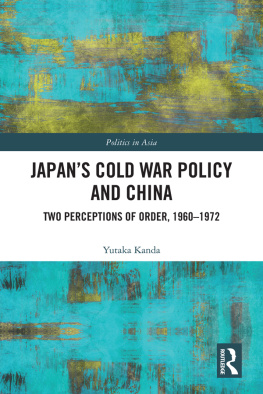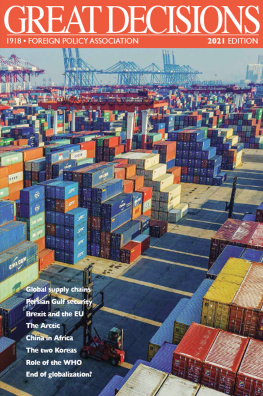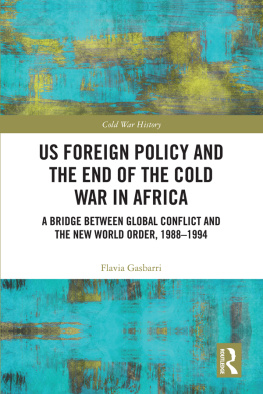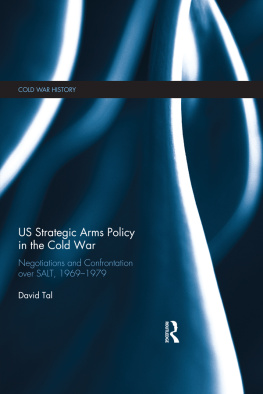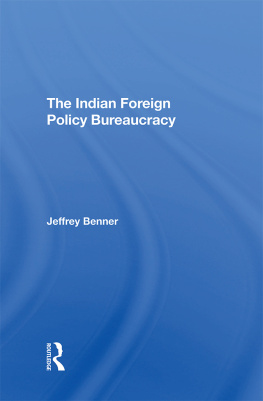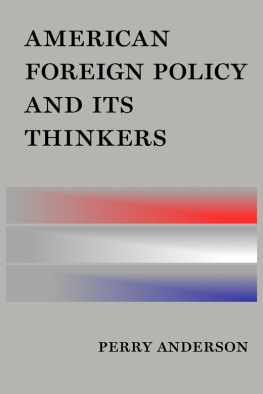Lend-Lease, Loans, and the Coming of the Cold War
Other Titles in This Series
Presidents, Secretaries of State, and Crises in U.S. Foreign Relations: A Model and Predictive Analysis, Lawrence Falkowski
U.S. Policy in International Institutions: Defining Reasonable Options in an Unreasonable World, edited by Seymour Maxwell Finger and Joseph R. Harbert
Congress and Arms Control, edited by Alan Piatt and Lawrence D. Weiler
Crisis Resolution: Presidential Decision Making in the Mayaguez and Korean Confrontations, Richard Head, Frisco Short, and Robert C. McFarlane
U.S.-Japan Relations and the Security of East Asia: The Next Decade, edited by Franklin B. Weinstein
Communist Indochina and U.S. Foreign Policy: Postwar Realities, Joseph J. Zasloff and MacAlister Brown
National Interests and Presidential Leadership: The Setting of Priorities, Donald E. Nuechterlein
Arms Transfers to the Third World: The Military Buildup in Less Industrial Countries, Uri Ra'anan, Robert Pfaltzgraff, Jr., and Geoffrey Kemp
Political Leadership in NATO: A Study in Multinational Diplomacy, Robert S. Jordan
Psychological Models in International Politics, edited by Lawrence Falkowski
Westview Special Studies in International Relations
Lend-Lease, Loans, and the Coming of the Cold War: A Study of the Implementation of Foreign Policy
Leon Martel
This is the first study to discuss in detail the implementation phase of policy decisions. Dr. Martel examines several related foreign policy decisions that contributed significantly to the coming of the Cold War: President Truman's order to cut back lend-lease to the USSR after the defeat of Germany, the termination of lend-lease to the USSR after Japan's capitulation, and the delayed response to two Soviet requests, made in 1945, for long-term credits for postwar reconstruction. He demonstrates how the outcome of these decisions was greatly influenced by the process of their implementation, a process that led to both a less favorable treatment for the Soviets and a stronger signal of U.S. attitudes than was intended by the Truman administration. From this point of view the onset of the Cold War is seen less as the result of the deliberate intentions of U.S. and Soviet leaders than as the consequence of the actions of those who processed their decisions. Dr. Martel concludes with recommendations for making policy outcomes more consistent with policy goals.
Leon Martel is executive vice-president of the Hudson Institute and director of its Research Management Council. He previously was on the political science faculty at Hofstra University.
Lend-Lease, Loans, and the Coming of the Cold War: A Study of the Implementation of Foreign Policy
Leon Martel
First published 1979 by Westview Press, Inc.
Published 2018 by Routledge
52 Vanderbilt Avenue, New York, NY 10017
2 Park Square, Milton Park, Abingdon, Oxon OX14 4RN
Routledge is an imprint of the Taylor & Francis Group, an informa business
Copyright 1979 Taylor & Francis
All rights reserved. No part of this book may be reprinted or reproduced or utilised in any form or by any electronic, mechanical, or other means, now known or hereafter invented, including photocopying and recording, or in any information storage or retrieval system, without permission in writing from the publishers.
Notice:
Product or corporate names may be trademarks or registered trademarks, and are used only for identification and explanation without intent to infringe.
Library of Congress Cataloging in Publication Data
Martel, Leon
Lend-lease, loans, and the coming of the Cold War.
(Westview special studies in international relations)
Bibliography: p.
Includes index.
1. Lend-lease operations (1941-1945). 2. United StatesForeign relationsRussia.
3. RussiaForeign relationsUnited States. 4. World War, 1939-1945Influence and
results. I. Title. II. Series: Westview special studies in international relations and U.S.
foreign policy.
D753.2.R9M37 327.73047 79-13678
ISBN 13: 978-0-367-02105-4 (hbk)
To the memory of my father
In the study of the making of public policy, and particularly of foreign policy, the final step of implementation has been largely ignored. Elaborate conceptual frameworks have been developed by some analysts for an idealized model of policy implementation,
The purposes of this study are, first, to help fill that gap with a better understanding of why and how foreign policy decisions are affected by their implementation and, second, to suggest what can be done to make implementation more consistent with desired outcomesa goal made ever more urgent by both the growing power of nation-states and the increasing complexity of their bureaucracies. The means for accomplishing these purposes will be an examination of the formation and implementation of four important and closely related U.S. decisions at the end of World War II concerning aid to the USSR. The first of these decisions was made after Germany's surrender in May 1945, when President Harry Truman signed an ordersubsequently modifiedthat sharply cut back lend-lease to the USSR. The second decisionalso subsequently modifiedfollowed Japan's capitulation in mid-August 1945 and resulted in the abrupt cessation of lend-lease to Russia, while assistance to other nations continued until September 2, the date officially proclaimed for the termination of the war in the Pacific. The third decision was the longdelayed American reply to a January 1945 Soviet request for $6 billion in long-term credits for postwar reconstruction; and the fourth was the U.S. response to, and subsequent handling of, Russia's second request for assistancefor a sum of $1 billionmade at the end of August 1945. Taken together these decisions constituted an important departure from the American wartime policy of giving all possible aid to Russia without any questions asked. Thus, many have considered them an important turning point in U.S.-USSR relations, and some have concluded that they show evidence of U.S. responsibility for the coming of the Cold War.
These four foreign policy decisions were chosen for several reasons. First, each was importantly affected by its implementation. Excessive zeal in the execution of the first lend-lease decision made it appear coercive and punitive; implementation of the second lend-lease decision resulted in different treatment for the Soviet Union than that accorded other lend-lease recipients; and long delays in implementing the loan decisionswhich finally made them negative replies to Russia's credit requestsaltered both their meaning and purpose. Second, what finally emerged in all four decisions differed significantly from the policy preferences of those who had initiated them. The lend-lease decisions produced effects that were not intended and, in part, they had to be repudiated.
Finally, these decisions were chosen because they have occupied a central place in the debate concerning the World War II and post-World War II origins of the Cold War. Some have seen in them evidence of the use of economic pressure by the American government as part of a deliberate policy to get tough with Russia in the closing months of the war, while others have denied the existence of such intentions and have attributed these decisions to strict interpretations of existing laws and the rapid dissolution of America's wartime bureaucracy following Japan's surrender. Thus, a careful account of their formation and implementation should shed further light on the intentions and alleged responsibility of those who participated in them.

